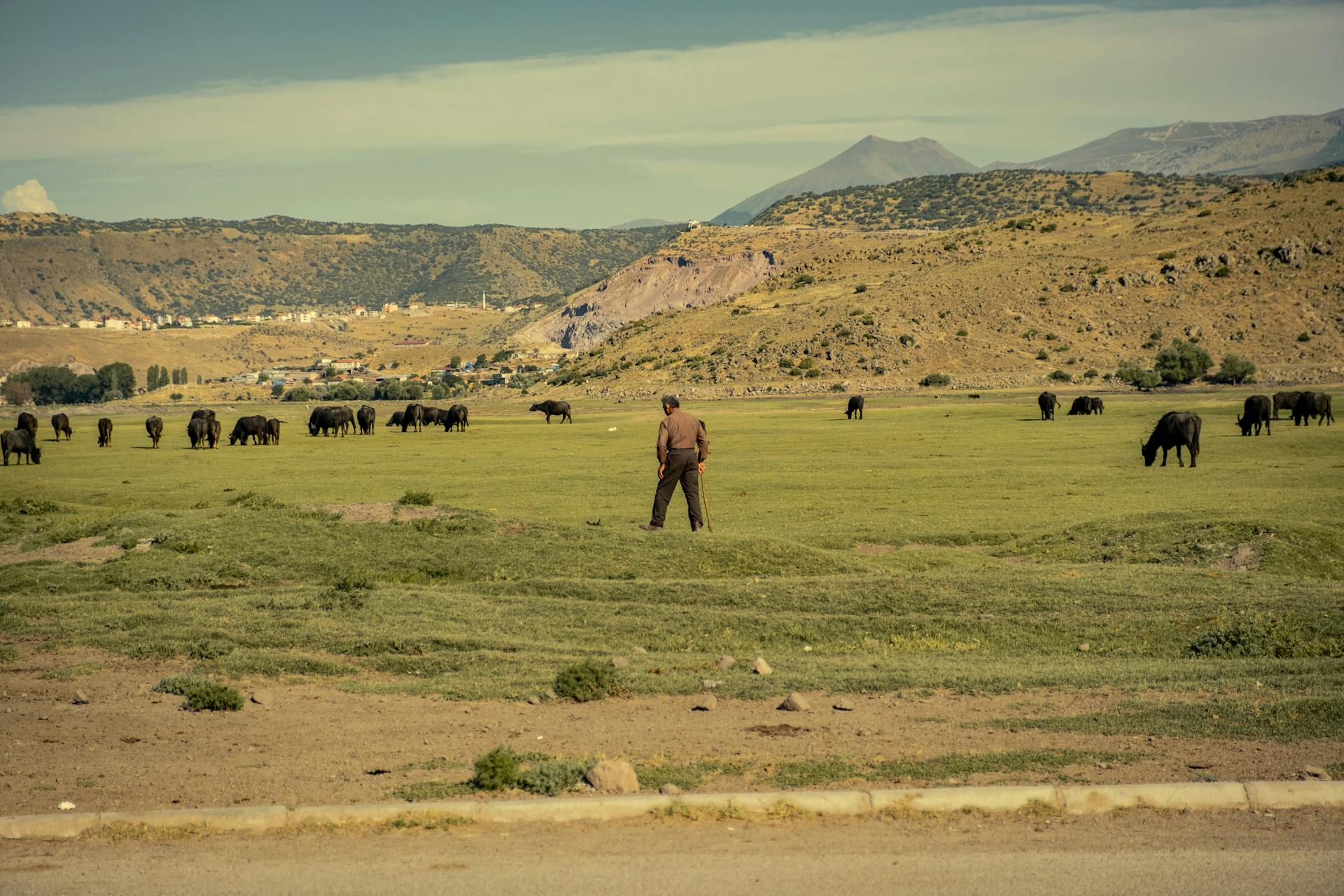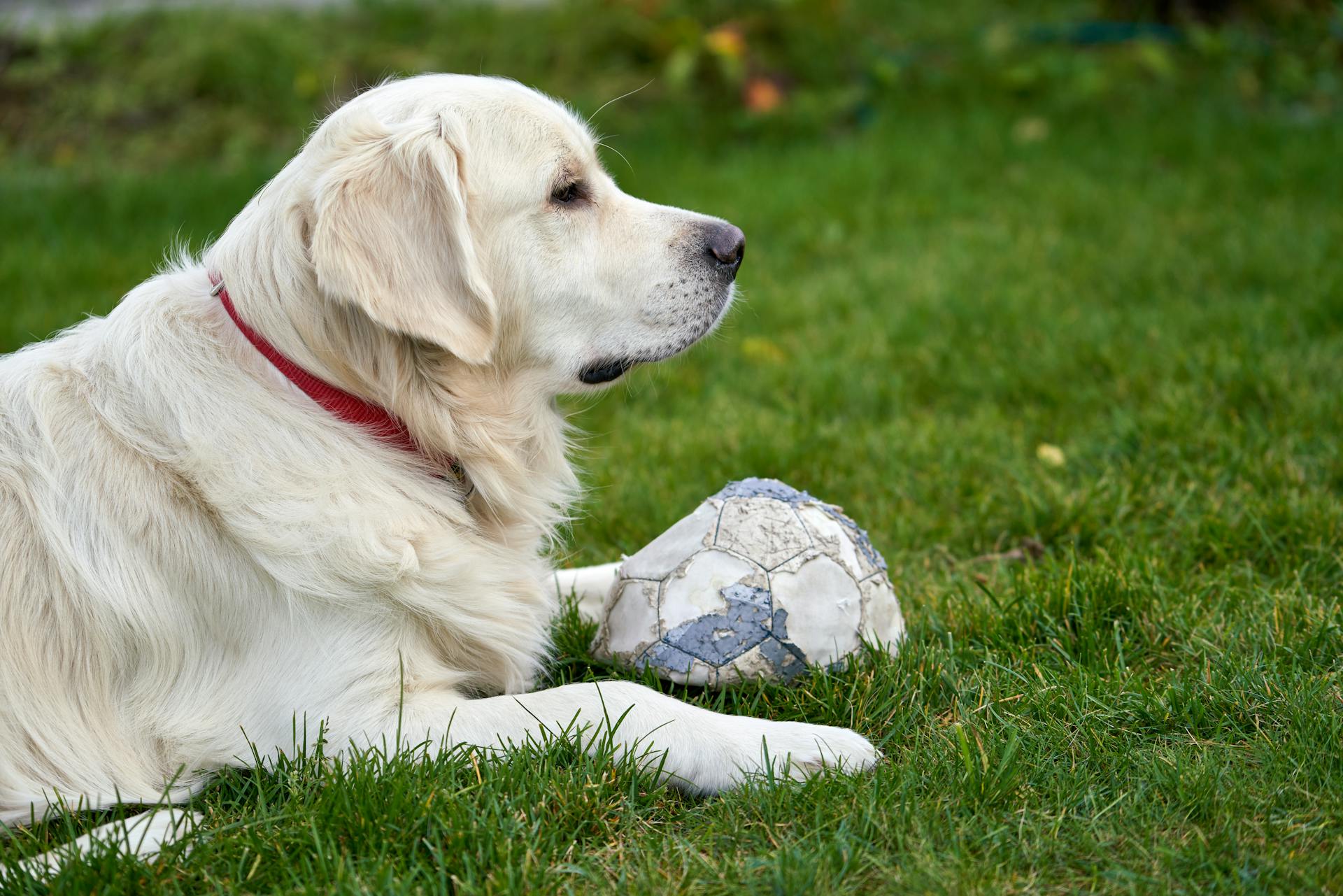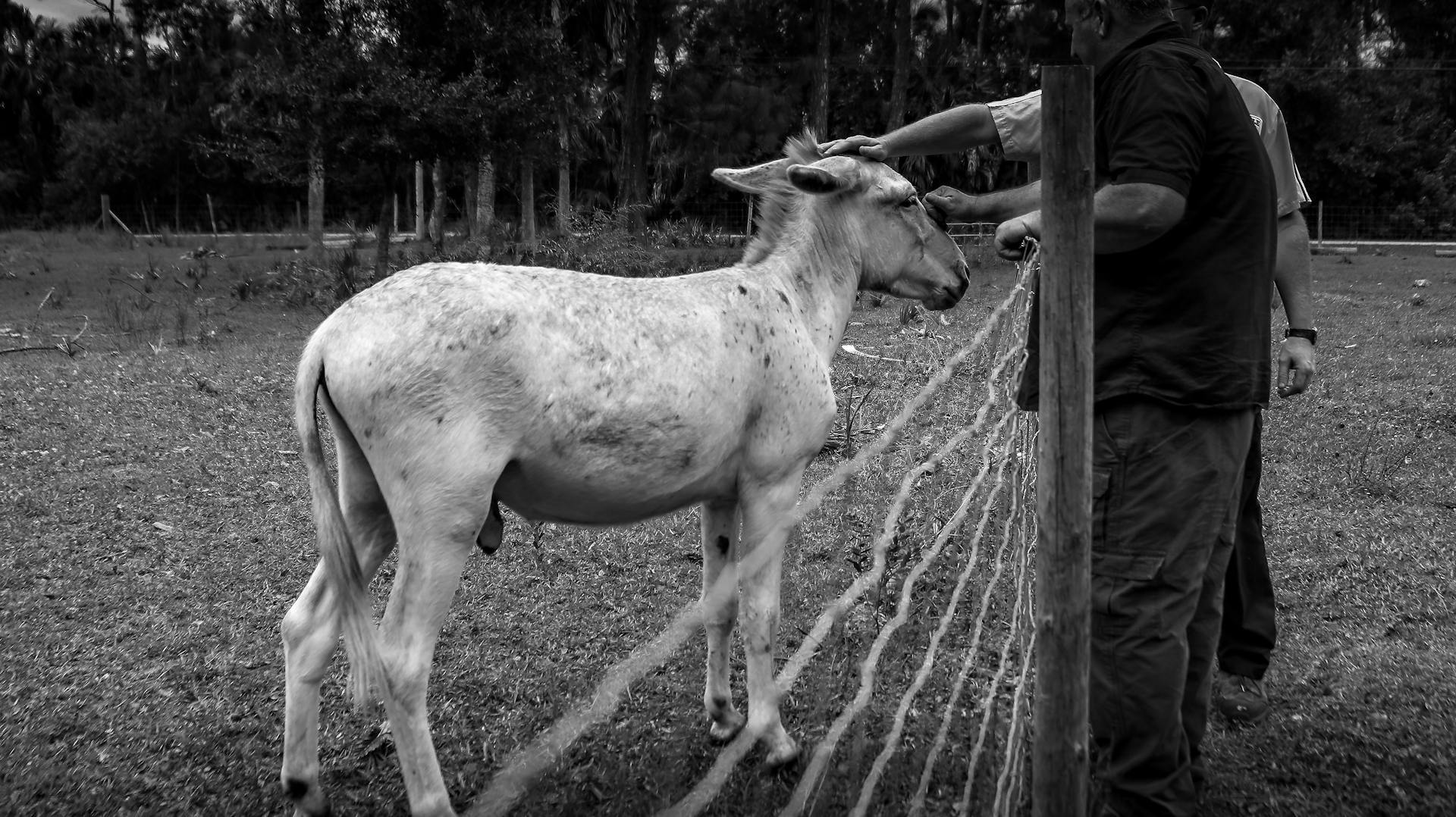
The Guardian of the Flock is a vital role in many sheep herding cultures, responsible for protecting and guiding the flock.
In ancient times, the Guardian of the Flock was often a revered position, with the person holding the role considered a leader and a source of wisdom.
The Guardian of the Flock is responsible for ensuring the flock's safety and well-being, which involves monitoring their behavior and health, as well as protecting them from predators.
Effective Guardians of the Flock possess strong observational skills, allowing them to detect potential threats and respond accordingly.
History and Origins
Herding dogs originated in Western Asia, on the territory of modern Iran and Iraqi Kurdistan in association with the beginning of livestock breeding. The domestication of sheep and goats began there in the 8-7th millennium BC.
The first shepherds managed livestock on foot, as mules, horses, and donkeys were not yet fully domesticated and obedient enough. Dogs that previously helped humans hunt became assistants in farming.
The main task of dogs in the early period was to protect herds from a variety of wild predators, which were very numerous at that time.
Archaeological findings of joint remains of sheep and dogs dated back to 3685 BC. This suggests that the ancestors of livestock guarding dogs can be traced back to six thousand years ago.
Livestock dogs are mentioned in the Old Testament, the works of Cato the Elder and Varro.
Physical Characteristics
LGDs are large, powerful dogs that retain heat longer, carry more fat reserves, and can go without food for longer than smaller dogs. Their stride is longer, making them more efficient at long distances.
In hot areas, however, dogs that are too large suffer more from the heat, so they're used exclusively in northern regions and mountain pastures. Livestock guardian dogs working in these areas are lighter in bone and shorter.
All LGDs have a dense water-repellent coat, strong build, and independent disposition.
Physical Traits
LGDs are large, powerful dogs that provide guardian dogs with several advantages, including retaining heat longer and carrying more fat reserves. This makes them well-suited for working in northern regions and mountain pastures.
Their large size also allows them to go without food for longer and tolerate illnesses better. They're less likely to get bone fractures, too.
One of the benefits of their long stride is that they're more efficient at long distances. However, dogs that are too large can suffer more from the heat, so they're not used in hot areas.
All LGDs have a dense water-repellent coat and strong build. They also tend to be independent in their disposition.
Here are some key physical traits of LGDs:
The Komondor, a type of LGD, is known for its dreadlocked fur, which offers protection from both the weather and predator bites.
Akbash
The Akbash is a unique breed with some impressive physical characteristics.
One of its biggest strengths is its coloring, which is mostly white and "biscuit" color. This helps it blend in with lighter-colored flocks of sheep, making it easier to distinguish from dark-colored predators.
The Akbash is a medium to large-sized dog, weighing between 80-140 pounds and standing 28 to 34 inches tall.
This breed is surprisingly agile and fast, considering its size.
Recommended read: Akbash Livestock Guardian Dogs
Guarding and Training
Guarding is a crucial aspect of a livestock guardian dog's role, and it's essential to teach them to stay with the flock or herd. An electric fence can be a great help in teaching them their territory.
Supervising your guardians during lambing or kidding is crucial, especially when they're young. They may have problems with "protecting" the babies from the mothers, or they may want to help clean the babies, which can be upsetting to the mothers.
Dogs must be taught not to roam off, as this is a common habit that causes more losses of dogs than any other. Sharp correction and temporary "timeouts" can be effective in teaching them to stay within their boundaries.
At least two dogs may be placed with a flock or herd, depending on its size, the type of predators, their number, and the intensity of predation. Male and female livestock guardian dogs have proved to be equally effective in protecting livestock.
To increase the odds of getting a good protector, it's essential to follow strategies that set up a good situation. This includes having a good fence, but also using livestock guardian animals that can provide 24-hour-a-day protection.
Here are some key points to consider when guarding and training your livestock guardian dogs:
- Teach them to stay with the flock or herd
- Supervise them during lambing or kidding
- Prevent roaming off
- Use at least two dogs with a flock or herd
- Choose a good livestock guardian animal
Choosing and Caring
Choosing a Livestock Guardian Dog requires considering the specific chemistry between the dog and your ranch environment. Ultimately, the right dog for you will depend on your operation's unique context.
Your needs will dictate what makes a "good dog" - it might be a dog who's friendly with humans but not clingy, or one who's good with children or handles cold climates. A dog who's been bred in familiar terrain can also be a valuable asset.
A good fence can help deter predators, but it's not foolproof - savvy predators can figure out how to avoid shocks. Livestock guardian animals, on the other hand, can provide 24-hour-a-day protection and give you peace of mind.
You might like: Small Livestock Guardian Dog Breeds
Choosing and Caring
Choosing a livestock guardian dog breed can be a daunting task, but it's essential to consider the breed's origin and era to ensure it's suitable for your needs. Many breeds have been developed over centuries to excel in specific regions and climates.
The Alpine Mastiff, for example, has been around since before the 5th century BC to the 19th century AD, making it a tried-and-true breed for guarding livestock in the Alps.
When choosing a breed, consider the country or region of origin, as this can give you an idea of the breed's adaptability to different climates and environments. The Aidi, from Morocco, and the Great Pyrenees, from France and Spain, are two breeds that have been developed to thrive in mountainous regions.
A breed's era can also be an indicator of its purpose and suitability for guarding livestock. The Alpine Mastiff, for instance, was used for this purpose in the past, making it a strong candidate for modern-day livestock guarding.
Readers also liked: Guardian Dog Breeds
Some breeds are more versatile than others and can be used for guarding livestock in various settings. The Central Asian Shepherd Dog, from Afghanistan, Kazakhstan, Kyrgyzstan, Turkmenistan, Uzbekistan, and Russia, is one such breed that has been developed to excel in different environments.
Here are some breeds from different regions that are known for their guarding abilities:
Ultimately, the best breed for you will depend on your specific needs and circumstances, but by considering the breed's origin and era, you can make an informed decision and find a loyal companion for your livestock.
Choosing a Protector
A good protector for your livestock is one that's relatively friendly with humans, but not clingy, and can deter local predators. This can vary depending on your specific needs and operation.
Most livestock guardian dog breeds are over 100 pounds, which can be intimidating to predators. They're also able to live outdoors all year long, making them a great choice for rural areas.
Livestock guardian animals, such as dogs and donkeys, can provide 24-hour protection for your animals, allowing them to stay out grazing and spreading manure on the land. However, not all livestock guardian animals are effective, and when they're not, they can cause losses and strain neighbor relations.
A good fence can help deter predators, but it's not foolproof. In areas with high predator pressure, savvy predators may figure out how to avoid shocks from electrified wires.
To increase the odds of getting a good protector, consider the following characteristics:
- Relatively friendly with humans, but not clingy
- Able to deter local predators
- Good with familiar people, yet unfriendly with other dogs
- Independent thinkers that require conscious attention to training and socialization
- Highly sensitive to livestock behavior
- Will bark when sensing an unfamiliar or threatening presence
Sources
- https://en.wikipedia.org/wiki/Livestock_guardian_dog
- https://niteguard.com/5-livestock-guardian-dog-breeds/
- https://www.shepherdess.com/training-resources-for-livestock-guardian-dogs/
- https://attra.ncat.org/publication/livestock-guardian-animals-protecting-the-flock-or-herd/
- https://onpasture.com/2016/04/11/livestock-guardians-protect-the-flock/
Featured Images: pexels.com


